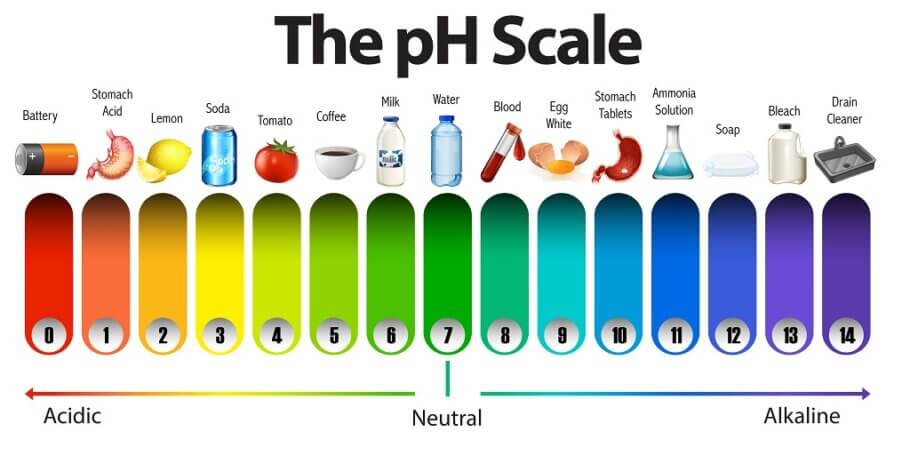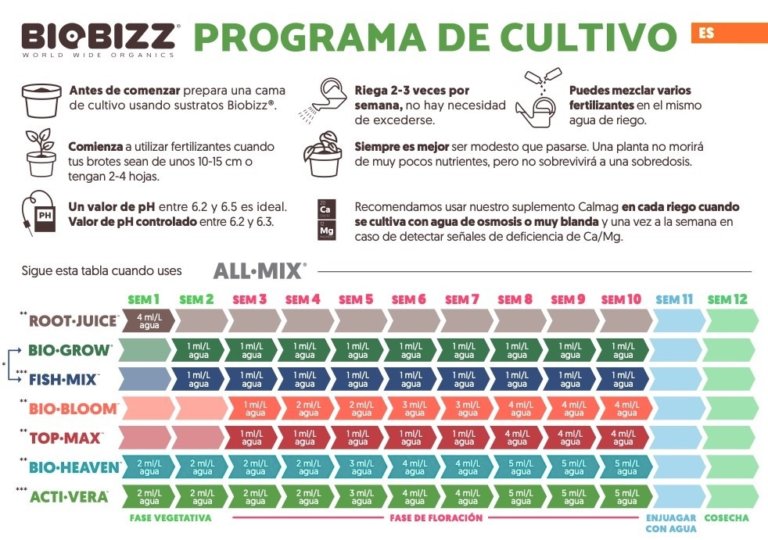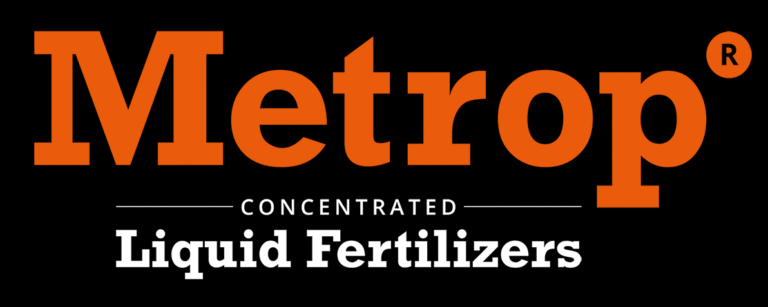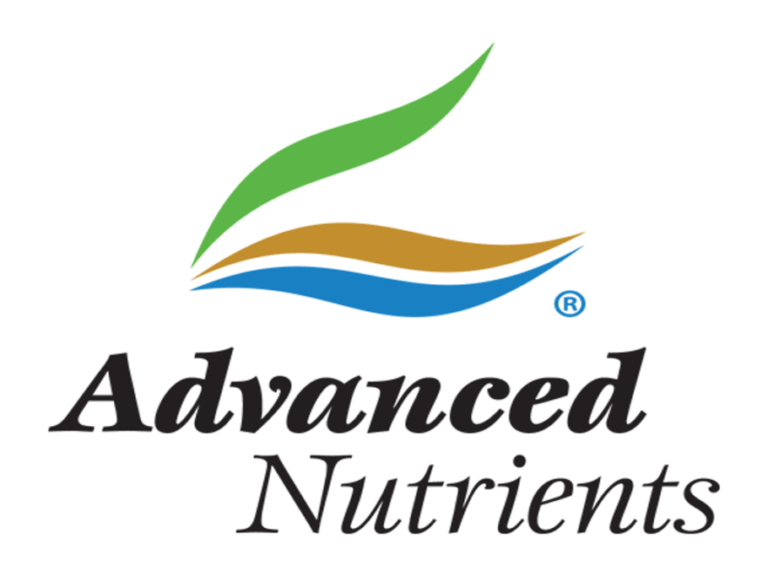Athena nutrient schedules and how to use their fertilisers
List of contents
Based in California, USA, the fertiliser brand Athena has quickly gained a position in the cannabis nutrient market thanks to the excellent quality of the product achieved, the amazing yields and, why not say it, the fact that professional cannabis cultivators such as the Jungle Boys have chosen them as a source of nutrition for their plants.
Today we're going to introduce you to their range of products, explain how to interpret their cultivation charts and give you some tips to make using Athena products even easier - and more effective. As many of you will already know, and we will go into detail about this later, the cultivation charts usually show the different life stages of the plant (usually expressed in weeks of growth or flowering) and the amount of each product in the range that should be mixed with the irrigation water at each stage.
Of course, the optimum ranges of EC or electroconductivity (the amount of dissolved salts or, in other words, fertiliser contained in the irrigation water) and pH (degree of acidity or alkalinity of the nutrient solution) for each stage of the crop are also indicated, as well as a practical foliar application chart. Although these tables are also available in millilitres per gallon on their website, all the measurements you will see in the Athena nutrition tables express the amount of product to be used in millilitres per 10 litres of water.
However, let's not get ahead of ourselves and start at the beginning, getting to know the products in the range of cannabis fertilisers offered by Athena a little better so that we can familiarise ourselves with them before going on to study the cultivation tables.

Athena product range
In Alchimia Grow Shop you can find 3 complete ranges of Athena products: the Pro Line, the Blended Line and the IPM Line. Let's see what products each one includes and what they are used for:
Athena Pro Line
This range of products consists of 3 highly water-soluble solid fertilisers that, when combined, offer everything plants need for exuberant growth and flowering. In addition, and as always in the case of Athena, the best results are sought by trying to make plant nutrition as effective as it is economical. The fertilisers in the Pro Line range are:
- Athena Core: This is the base fertiliser to be used throughout the entire crop, both in the growth and flowering phases. Very rich in nitrogen, calcium and microelements (its NPK is 14-0-0), it will be necessary to add one of the other two fertilisers in this range to the indicated dose of Athena Core depending on the stage of the plant. Athena Core contains calcium nitrate, iron EDTA, copper EDTA, manganese EDTA, zinc EDTA, boric acid and sodium molybdate.
- Athena Pro Grow: In this case we have the fertiliser for the growth phase that we will mix in the water with Athena Core during this stage of the plants' life. Rich in phosphorus and especially potassium (NPK 2-8-20), Athena Pro Grow contains potassium phosphate, potassium nitrate, potassium sulphate, magnesium sulphate and iron DTPA.
- Athena Pro Bloom: Finally, Athena Pro Bloom is the fertiliser for the flowering phase that we mix with Athena Core throughout this important period of development. Logically, it is very rich in phosphorus and potassium (NPK 0-12-24), ensuring that the plants will have all the nourishment they need to develop heavy flower colas. Its composition consists of potassium phosphate, potassium sulphate, magnesium sulphate and iron DTPA.
These fertilisers are highly soluble and will not clog the irrigation systems of e.g. hydroponic crops. Always mix Pro Grow or Pro Bloom with Athena Core for optimal results. Do not mix the fertilisers dry, always mix them in the tank to which you have previously added water. In the cultivation tables you will see that the quantities of each product in this range are expressed in grams per 10 litres of water (it is crucial to weigh each product: do not dose according to volume, but according to weight). To achieve the best results, and as we will see, this range is complemented with Athena Cleanse and Athena Balance.
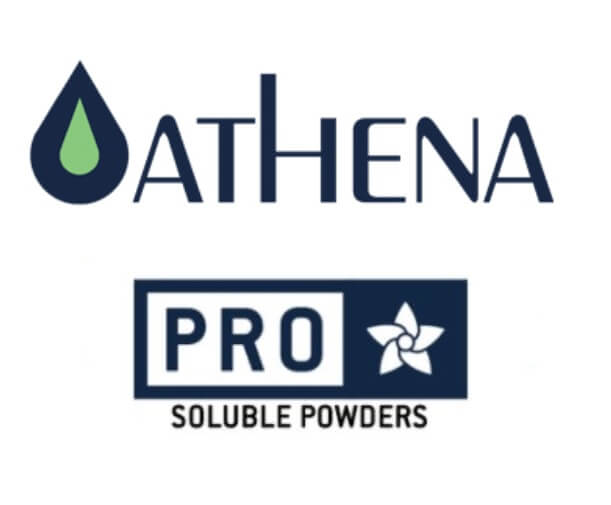
Athena Blended Line
This product range offers liquid fertilisers and additives in the classic two-part nutrition system, in this case with Athena Grow A+B and Athena Bloom A+B as base fertilisers. It is complemented with a PK supplement (rich in phosphorus and potassium), a kelp-based stimulator, a calcium and magnesium supplement, a substrate cleaner and a pH balancer. Let's take a closer look:
- Athena Grow A+B: This base fertiliser for the growth phase consists of two parts; part A has an NPK of 4-0-1 while that of part B is 1-3-5. When preparing the nutrient solution with Athena Grow A+B, it should be mixed into the water in the tank by first adding the necessary amount of part A and then part B, always in identical quantities to maintain the correct ratio of minerals in the mixture.
- Athena Bloom A+B: Two-part base fertiliser that works in exactly the same way as the previous case, although as they are nutrients for flowering they contain a different ratio of minerals: NPK of 4-0-5 for part A and 0.7-6-5 for part B. The chelated forms of micronutrients contained in Athena Bloom A+B make the assimilation of these elements faster and can be carried out in a wider pH range.
- Athena PK: This is a supplement rich in phosphorus and potassium, ideal for combining with Athena Bloom A+B during the flowering phase to achieve flowers as big as they are heavy. The NPK of Athena PK is 0-4-5, an amount that ensures the absence of the various problems that can occur when it is higher, such as poor assimilation of calcium or magnesium.
- Athena Stack: This plant development stimulator is based on kelp extract, promoting an explosive development of the plants just when they need it most, at the beginning of flowering. Its use is recommended from the last week of growth until well into flowering (fourth or fifth week), at the moment when the plant stops growing vertically, and also after each transplant. Athena Stack can also be used via foliar application with a sprayer, although in this case it is recommended not to do so after the third week of flowering.
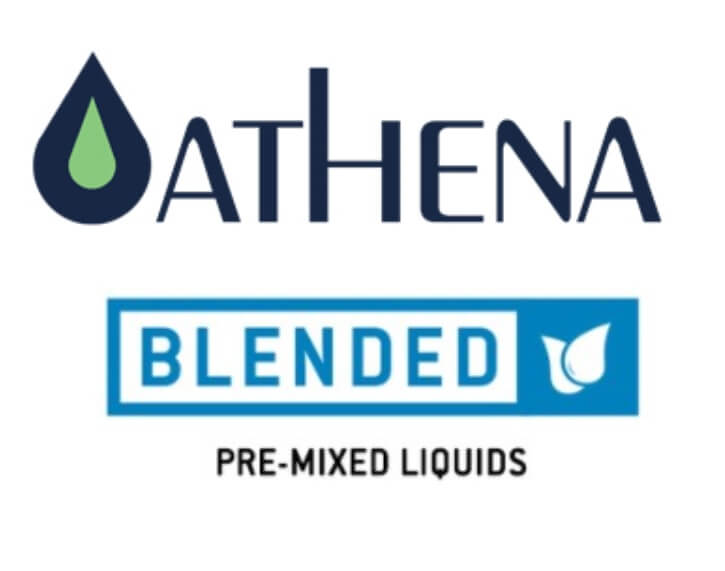
- Athena CaMg: Additive rich in calcium and magnesium specially formulated to provide optimal amounts of these two elements without creating imbalances or toxicity in the substrate. Athena CaMg is very useful when growing with reverse osmosis water and/or inert substrates such as rockwool or coconut fibre, where an extra supply of these elements is often needed.
- Athena Cleanse: Formulated with a hypochloric acid base, this product aids the decomposition of organic matter in the soil while preventing nutrient accumulation in both the growing medium and automatic irrigation systems. Athena Cleanse is non-toxic and does not contain any nutrients, and is often used during the last weeks of cultivation to clean substrate, tubing and drippers.
- Athena Balance: With an NPK 0-0-2, Athena Balance - made from potassium silicate - helps to balance pH while providing better plant growth and structure thanks to its silicon content.
Athena IPM
The last range in fact comprises just one single product, a broad-spectrum insecticide and fungicide formulated from essential oils of different plants and without any chemical or artificial compounds. In this way, Athena IPM (Integrated Pest Management) can be used throughout the entire crop (although, as always, we recommend not using foliar applications of any kind on advanced flowering plants) and, if possible, always with the grow lights off. It is especially useful against soft-bodied insects as well as fungi such as powdery mildew.
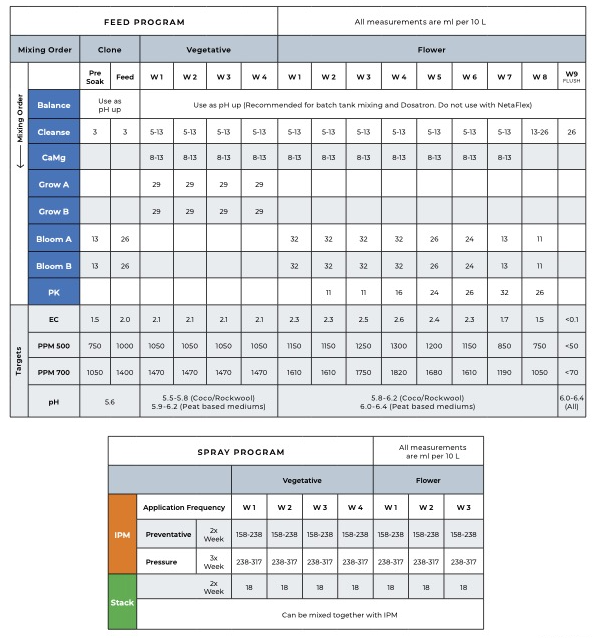
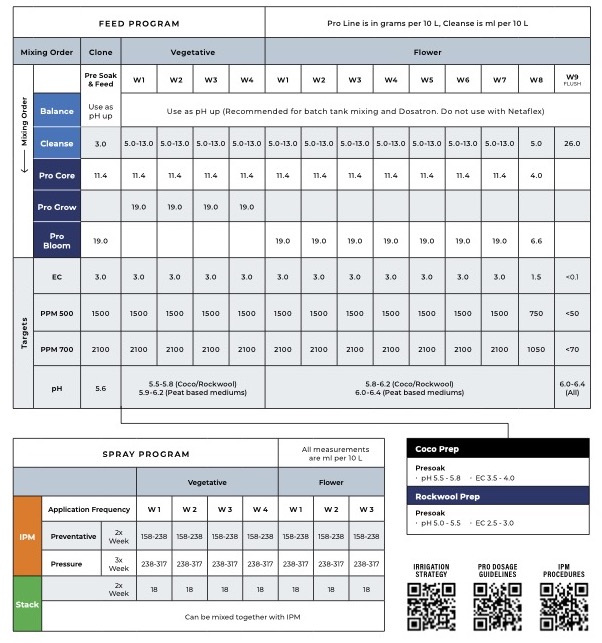
How to use the Athena feed schedules
Let's take a look at some important aspects when using Athena's nutrition and cultivation tables for each of the ranges, Blended Line and Pro Line. Remind you once again that all measurements are in ml/10L of water, and that the different final concentrations of nutrients in the tank are expressed in 3 different measurements: EC, PPM 500 and PPM 700, so you must be clear about what kind of measurement your EC meter gives you to adapt the doses to the desired final amount of dissolved salts.
One last reminder before going into detail: bear in mind that these tables are designed for use with soft water or even reverse osmosis water, with a starting EC in the water of no more than 0.4. In case of using harder water, with more dissolved salts already in the starting water, it will probably be necessary to reduce the fertiliser dose to achieve the desired final EC (however, we do not recommend starting with water that has an EC higher than 0.6).
Growth stage (Indoor & Outdoor)
As we can see, Athena begins with a vegetative growth phase of about 4 weeks, in which the doses of nutrients provided are fairly constant. It should be noted that we are also guided on how to prepare the water to soak the rooting medium for clones; once rooted and transplanted, we start with week 1 of growth in the normal way. Of course, in case we want to give more or less weeks of growth to the plants, we only have to lengthen the growth diet in the first case, or switch to flowering nutrition when necessary in the second case.
Flowering stage (Indoor & Outdoor)
Athena presents its tables for a flowering period of 9 weeks, which is perhaps one of the most common periods for most cannabis varieties. As always, in case of a shorter flowering period, we will fertilise following the table but respecting the final flushing periods using only Athena Cleanse. In the opposite case, i.e. in strains with a longer flowering period, we will simply continue to fertilise following the doses of week 7 until necessary and we should start reducing the amount of fertiliser (last 2 weeks, especially the last week).
pH & EC
At the bottom of the tables we can check the correct pH level for each week (also to prepare the substrates in case we have to hydrate them), as well as the final amount of dissolved salts that we should obtain (as we have already mentioned, expressed in 3 different units: EC, PPM 500 and PPM 700), both for inert substrates such as coconut fibre or rockwool and for substrates rich in peat (soil). As always, we recommend first adding water to the tank, then fertilisers and additives until the desired EC is reached, and finally adjusting the pH level to the optimum range.
pH and cannabis
In this post we tell you about pH and how important it is for having healthy and lush cannabis plants. Either in soil or inert substrates, adjusting the pH value is very important for our plants to properly assimilate nutrients, so it is something that every grower should know about.
Spraying Athena products
We can see that both nutrient charts also come with small tables for foliar applications, in this case of IPM and Athena Stack (mixed in water). You can see that they have two dosages, one for "maintenance" or prevention (2 times a week) and another called "pressure" for when we have to fight a pest infestation and not just prevent it (3 times a week). Despite the safety offered by Athena IPM, foliar applications are not recommended after the third week of flowering.
Athena nutrients for autoflowering varieties
In the case of automatic plants, we will adapt the values of the growth phase to the number of weeks that this stage takes for our particular plant, although perhaps lowering the fertiliser dose to approximately 70% of what the charts stipulate. Once the plant shows signs of starting to enter flowering, we will switch to the diet for the bloom stage until we have to start the final flush.
We hope that this article will help you to get the most out of your crops while using Athena's fertiliser lines, the truth is that they are products that, as they have already proven in highly-reputed commercial gardens, work wonderfully and offer really surprising results, both in terms of the quality of the final product and the savings for the grower.
Happy growing!

















































